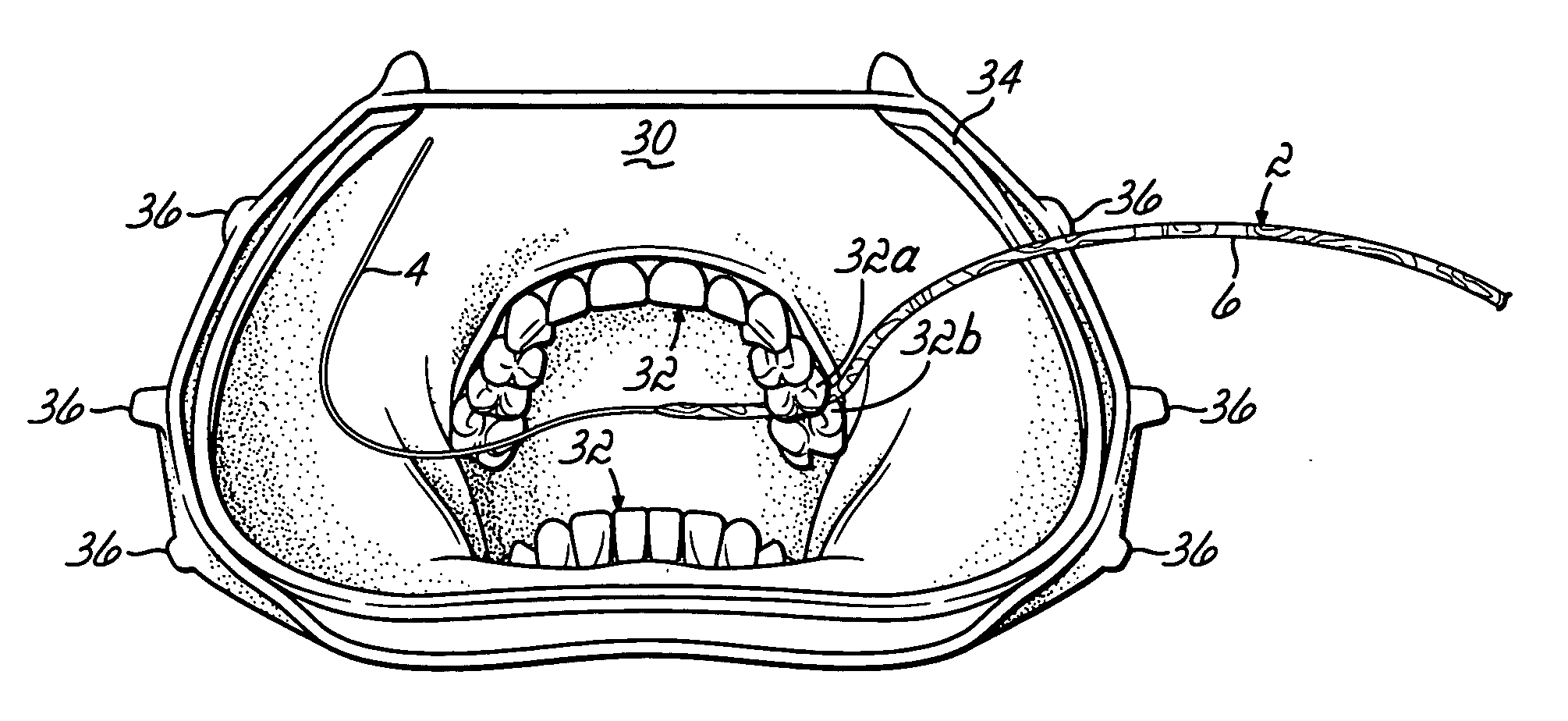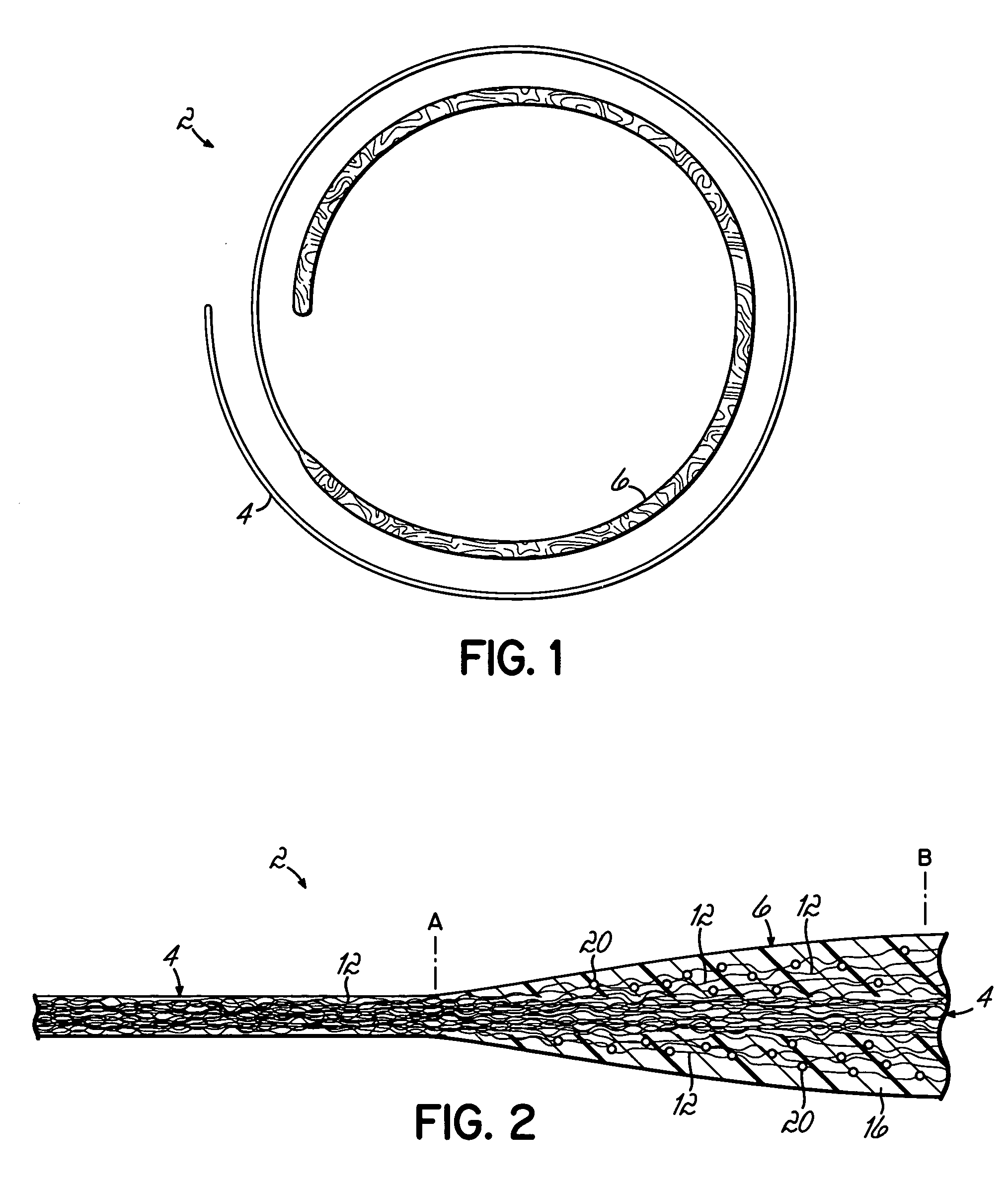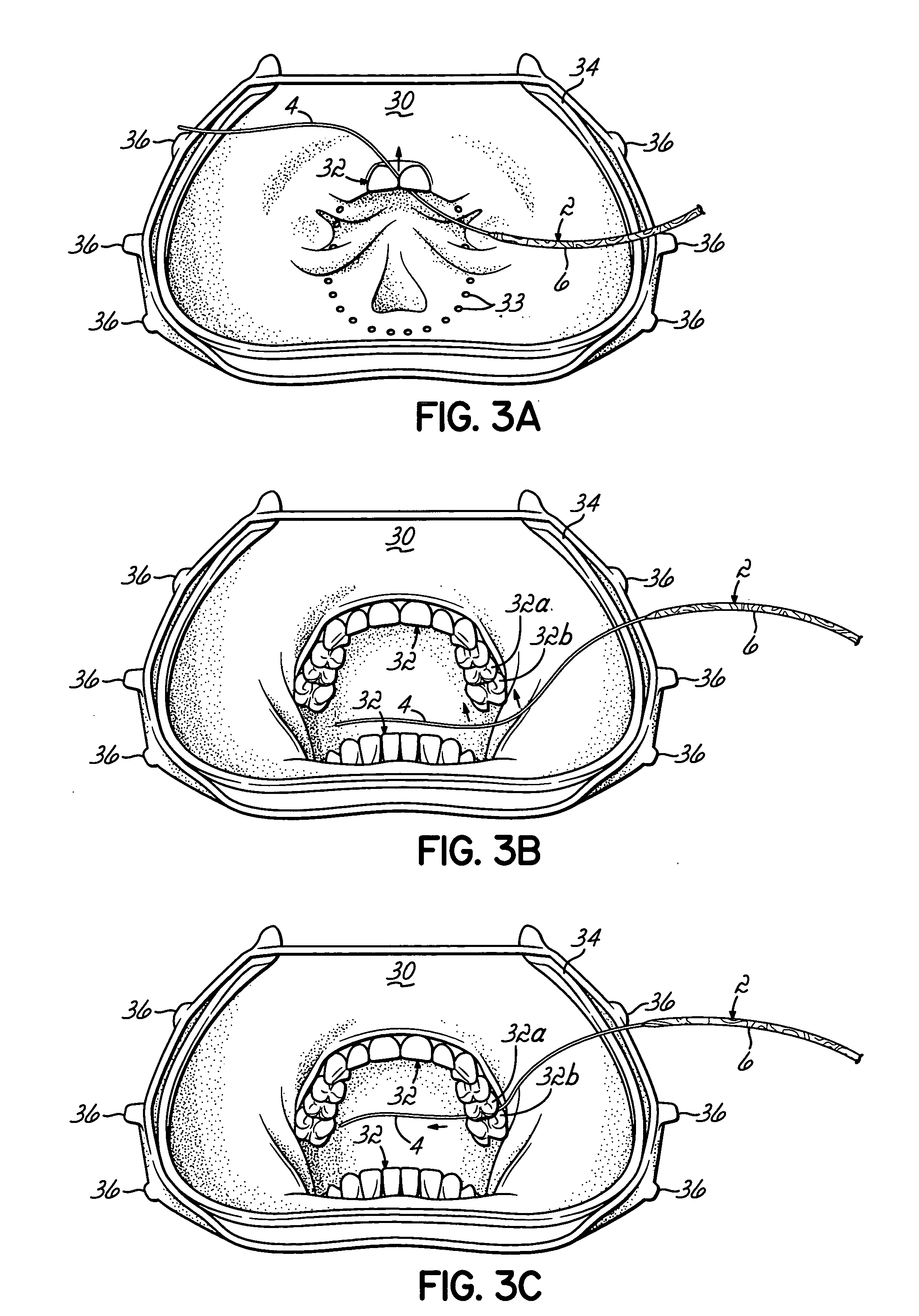Clamping cord with polymeric wedge component, and method of affixation
a wedge component and clamping cord technology, applied in the field of clamping cords with polymeric wedge components, can solve the problems of inferior seal around the teeth, slippage or unwanted movement, and inability to closely match the retainer clamp to the tooth, so as to achieve effective stabilization of dental dams or classes, not adversely affecting the quality of stabilization, and fewer obstructions
- Summary
- Abstract
- Description
- Claims
- Application Information
AI Technical Summary
Benefits of technology
Problems solved by technology
Method used
Image
Examples
Embodiment Construction
[0020] With reference to FIG. 1, the clamping cord 2 of the present invention includes a core portion 4 and a clamping portion 6. Optionally, the clamping cord 2 may have a section of core portion 4 extending from both ends of the clamping portion 6, thereby permitting introduction of the clamping cord 2 between multiple sets of teeth.
[0021]FIG. 2 depicts the clamping cord 2 in cross-section, showing the core portion 4 in the depicted embodiment having longitudinally arranged fibers 12, which extend the length of the clamping cord 2. The longitudinally arranged fibers 12 may be round or flat, natural or synthetic, and may be coated with a wax, polytetrafluoroethylene (PTFE), or other suitable lubricant commonly known in the art, unless the treatment process for the clamping portion 6, as described below, would be adversely affected by such a coating. The fibers 12 may include nylon, polyester, polypropylene, natural fibers like cotton, or other materials capable to impart tensile s...
PUM
 Login to View More
Login to View More Abstract
Description
Claims
Application Information
 Login to View More
Login to View More - R&D
- Intellectual Property
- Life Sciences
- Materials
- Tech Scout
- Unparalleled Data Quality
- Higher Quality Content
- 60% Fewer Hallucinations
Browse by: Latest US Patents, China's latest patents, Technical Efficacy Thesaurus, Application Domain, Technology Topic, Popular Technical Reports.
© 2025 PatSnap. All rights reserved.Legal|Privacy policy|Modern Slavery Act Transparency Statement|Sitemap|About US| Contact US: help@patsnap.com



